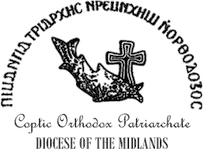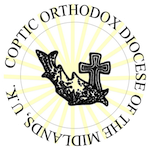The Beauty of Orthodoxy – Part I
Our view of Orthodox faith and worship is misconstrued – we think of it as dry, constraining, even bitter. To understand it, we need to go back to the grass roots – what is Orthodoxy? What are its main characteristics? This article is the first in a series on “The Orthodox Life.”
To understand Orthodoxy and its main characteristics, we need to go back even further. Orthodoxy does not survive in a vacuum; it is the LIFE of the Orthodox Church.
So, we must first ask, “What is the Church”? What does it mean to us in our lives? The Church as we know it is that which was left to us by our Lord Jesus Christ, that we may continue to live in His life and light and promise, within the teachings He gave to His disciples. We have this life and these teachings today because of the Church. The Church is much wider and bigger than a building – it is the Body of Christ, which incorporates us all into Him, with Him as the head.
We must look at the model of the Church as it started in the first century with the Apostles: how did they understand the Church? We must use Scripture, for that’s what we rely on most. Many people have a misunderstanding about Orthodoxy – they think we do not rely enough on Scripture, but instead rely only on dogma. That is completely wrong; Scripture is the foundation and cornerstone of our Church, and the basis of all our understanding, faith and tradition. Look at what Acts 2:30-43 says about the early Church: “And they continued steadfastly in the apostles’ doctrine, in fellowship, in the breaking of bread, and in prayers.” That is the Church, then and now.
First, the Apostles’ doctrine – that is what the Lord taught them, to teach to us. It is important as the foundation of the Church. Second, fellowship is mentioned. We are all members in one body, as St. Paul said. Much of Christianity is about standing together in Christ. That fellowship might be through praying together in services and liturgies, it may be serving as one body or in ministry. It’s anything we do together under the umbrella of the Church, even when being social. Third, the breaking of bread – it can be literally the sharing of meals in fellowship, or it can be the ritual sacramental breaking of bread, as Christ taught us in the Eucharist. Finally, prayer: it’s a fundamental characteristic of the Church. We do it communally, ritually, individually, collectively. So that is the Church: the Apostles’ doctrine, fellowship, breaking of bread, and prayers.
Where did that go? The body is fragmented; look at the Catholic Church, Protestant churches and the various offshoots of that. In the first century, there was only One Church, with Christ as its head. It had various centers and sees, but when they came together in ecumenical councils to face heresies, they were “universal” (or “catholic”, which literally means “incorporating all”). Through those early councils, we saw the One Church functioning as one Body, but then schisms came about and we were fragmented…
Orthodoxy is based upon a very REAL relationship with God. I once met a gentleman who came to the Coptic Orthodox Church when he was first a charismatic Christian. When he first came, he only realized the “bells and smells” of the Church – the incense, the deacons, the cymbals, etc. But Orthodoxy is more than that outward appearance; its main characteristics lie far beneath that outward surface. If you go to the depths, you see these outward appearances and manifestations, but in their glory and with understanding.
What are these characteristics of Orthodoxy? First, Orthodoxy is firmly founded in Scripture. All the teachings of the Church are founded in Scripture. Some members of the church have an aversion to pursuing Scripture, to study the Bible, to dig deeper. Our church’s rituals are 70-80% based directly from Scripture – the Agpeya prayers, the language and institution of the Liturgy, their words come directly from the Bible. Also, we believe in a factual and literal reading of the Bible. There are three schools concerning Scripture: (1) the Bible is completely literal; (2) the Bible is completely symbolic (i.e., it can be ignored); and (3) the Bible is sometimes literal and sometimes symbolic. The third option is not really an option – we cannot pick and choose what to believe and what not to. Our interpretation is that every word of the Bible has meaning, importance and significance.
Second, there is Tradition, which is from the teachings and interpretation of the Fathers on Scripture. Thus, even Tradition (with a capital “T”) comes from Scripture. If you look at the writings of the Church Fathers, you will find they mention every verse in the Bible except for 12 verses. The Church Fathers interpreted the Bible and handed it down to us, so that we may progress and hand it down. We also have Apostolic succession, which is the lineage of our priesthood. We can trace back this priesthood, knowing when and by whom each priest was ordained all the way back to St. Mark. For example, I know I was ordained by His Holiness, and we know who ordained him, and so on, all the way back to St. Mark, who received his mandate of priesthood through Christ Jesus Himself.
The bishops of the Church were successors of the Apostles themselves, and their priesthood was recognized, and by the authority of the Holy Spirit, they were given to interpret and teach Scripture, which then became the basis for the authority of the ecumenical councils. We, today, are that same Church, but we are in today’s environment.
In the Coptic Church, we receive a very ascetic attitude toward worship, thought and prayer. Our very powerful fathers – Sts. Cyril, Athanasius, Pakhoum, Shenouda, Macarius – were very ascetic. There is this tale people tell about ascetics – they fled persecution and went to the wilderness to escape. But what people will not tell you is that they withstood persecution and attacks by the Berbers, their walls were burned down, they were beaten and yet they persisted and survived. Monastic life in the Coptic Church is one of the most thriving monastic movements in the Christian Church today. Throughout many other churches and denominations, monasteries are shutting down because of the lack of people entering monastic life. We, on the other hand, are opening more and more monasteries, and it’s not just a numbers game. This is an indication of the spirituality we have received through our Church.
Some people say, “The Church is dead.” That is not true – that which is dead does not give fruit. That which is dead does not produce. That which is dead does not bring forth life from death. These monasteries themselves are life in the deserts that are full of death and nothingness, but the prayers of the monks and nuns have brought the desert to life.
Because our church has these ascetic and ecumenical qualities, there is an interesting marriage between the two. The strength of teaching with the humility of monasticism. While our worship, praise, prayers and rituals are so full of life and expression in the hymnology (from the ecumenical side), at the same time, they have undertones of respect, honor and calmness that come from the acetic side. Coming from that are our strong pursuits of contemplation and meditation and solitude.
As you know, because our rituals are so rich, we have a strong dependence on the worship and praise. Some people think of “praise and worship” as a twentieth-century phenomenon of the charismatic movement. Our Fathers have been worshiping in the catacombs since the first century, and in the monasteries since the fourth century. Our midnight praise is nearly the same as what our Fathers prayed in the fourth century. Look at some of our beautiful, joyful hymns that bring the words to life. That is alive, it’s not dead.
Why is the Coptic Orthodox Church so different from other churches, as people are so quick to point out? People say we look like we do not want to “move” or partake with anyone. We are different because we have characteristics that are different from other churches, that are true and pure and handed down to us. And we do not compromise on those – not our dogma, theology, or teaching – because, quite simply, they are not ours to compromise on. If I lend you my car, and then someone says, “This car is boring bishop’s cars. Let’s make it youthful, with spinning wheels, tints, spoilers, revved up engine, etc.” You could not do that – it’s not your car with which to do that. We have received the teachings of our fathers only to hand them on to those who come after us, and they were initially given to us by the Lord and founded in Scripture. If we did not have this safeguard, anyone could change anything in the Church.
The Church IS progressive in the way it delivers the message. We give you this lecture talking your language, on your terms, using the latest technology and the means around us. That is fine – our Lord Himself spoke the people’s language and used parables. So we can use these tools to be progressive in the way we deliver this message – but we cannot change the content, for it is not ours to change.









